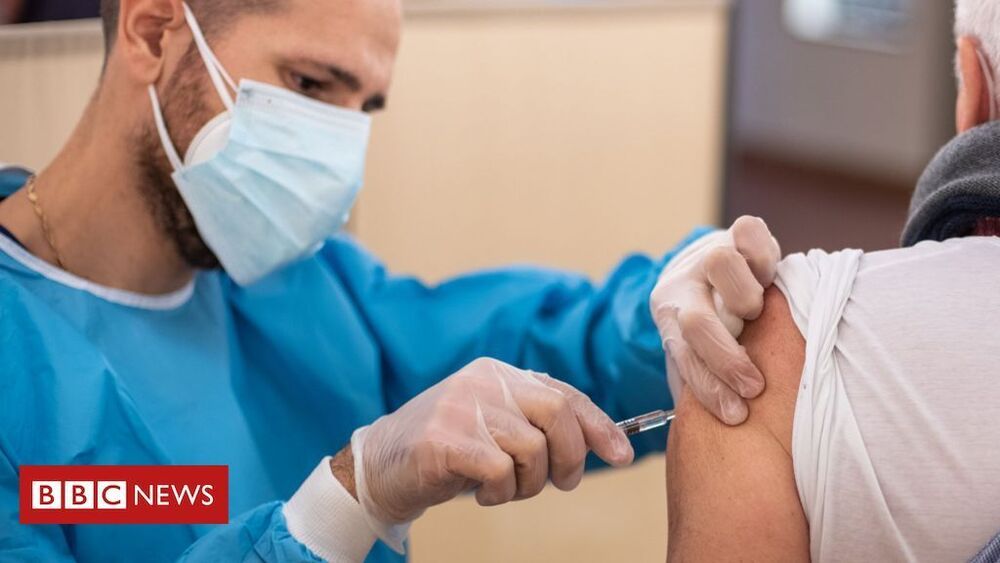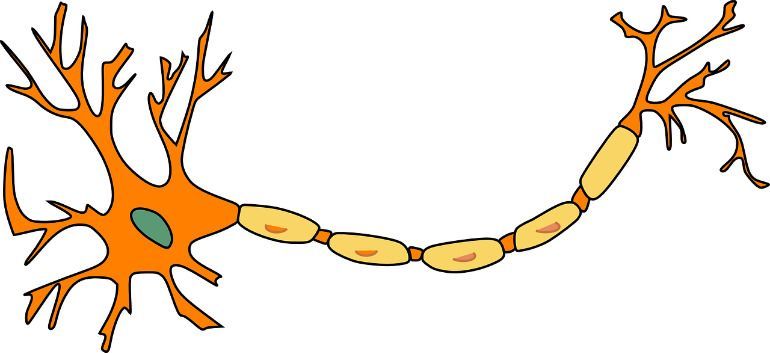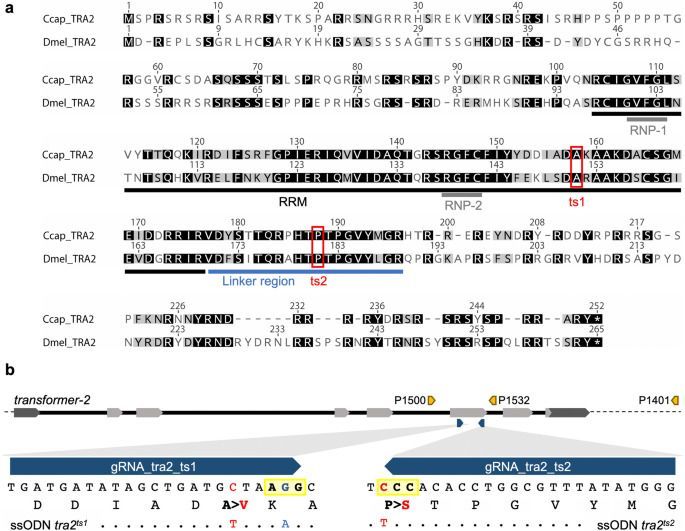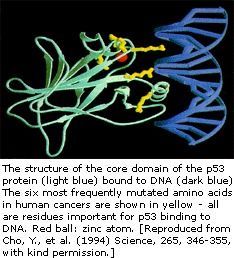Could it be?
‘Milestone’ vaccine offers 90% Covid protection.
The vaccine is a “significant step” forward for getting life back to normal, but challenges remain.


#BREAKING: Pfizer says an early peek at its vaccine data suggests the shots may be 90% effective at preventing COVID-19. bit.ly/3leFbzp
Pfizer says an early peek at its vaccine data suggests the shots may be 90% effective at preventing COVID-19, indicating the company is on track later this month to file an emergency use application with U.S. regulators.
Monday’s announcement doesn’t mean a vaccine is imminent: This interim analysis, from an independent data monitoring board, looked at 94 infections recorded so far in a study that has enrolled nearly 44,000 people in the U.S. and five other countries.
Pfizer Inc. did not provide any more details about those cases, and cautioned the initial protection rate might change by the time the study ends. Even revealing such early data is highly unusual.

The ability to cancel magnetic fields has benefits in quantum technology, biomedicine, and neurology.
A team of scientists including two physicists at the University of Sussex has found a way to circumvent a 178-year old theory which means they can effectively cancel magnetic fields at a distance. They are the first to be able to do so in a way that has practical benefits.
The work is hoped to have a wide variety of applications. For example, patients with neurological disorders such as Alzheimer’s or Parkinson’s might in the future receive a more accurate diagnosis. With the ability to cancel out ‘noisy’ external magnetic fields, doctors using magnetic field scanners will be able to see more accurately what is happening in the brain.

The U.S. drone delivery company Zipline is getting ready to begin commercial operations in Israel next year, TheMarker has learned. The company has begun the regulatory process and is in talks with potential customers.
Zipline hopes to begin its pilot program in Israel early next year, delivering blood and medicine to hospitals in the north and south of the country. While the company has drawn up detailed plans for entering the local market, there’s no guarantee that the pilot will develop into a commercial launch of the service.
Founded in 2014, Zipline has raised around 230 million to date and has a valuation of more than $1 billion. It’s considered the most prominent player in the field: The company has operated commercial drone delivery services since 2016 and has carried out more than 70,000 deliveries.
Some scientists believe that the ability of animals to store memory came from a virus that infected a common ancestor hundreds of millions of years ago. 😃
This study is radically changing how we view the process of evolution.

Restoration of lost motor function after stroke is typically accomplished after strenuous rehabilitation therapy lasting for over months. However, new research published by a group led by Yukio Nishimura, the project leader of the Neural Prosthesis Project, Tokyo Metropolitan Institute of Medical Science showed that an artificial neural connection (ANC)*1 successfully allowed a new cortical site, previously unassociated with hand movements, to regain control of a paralyzed hand in a matter of minutes.
In this research, experimental animals regained voluntary control of a paralyzed hand about ten minutes after establishment of an ANC. Animals engaged in learning with a functional ANC showed variable levels of input signals provided by the cerebral cortex*2 as hand movement improved. Specifically, the activated area of the cortex became more focused as control of hand movements improved.
Through this training of various areas of the cerebral cortex, the research team successfully imparted a new ability to control paralyzed hands via an ANC, even if those areas were not involved in hand control prior to the stroke. Examples of such regions include areas of the cortex that controls the movement of other body parts such as the face or shoulder, and even the somatosensory cortex, which is responsible for tactile and proprioception processing and is normally not associated with motor control. This finding suggests that an ANC can impart new motor control functions to any cortical region.

Superconductivity is a phenomenon where an electric circuit loses its resistance and becomes extremely efficient under certain conditions. There are different ways in which this can happen which were thought to be incompatible. For the first time, researchers discover a bridge between two of these methods to achieve superconductivity. This new knowledge could lead to a more general understanding of the phenomena, and one day to applications.
If you’re like most people, there are three states of matter in your everyday life: solid, liquid, and gas. You might be familiar with a fourth state of matter called plasma, which is like a gas that got so hot all its constituent atoms came apart, leaving behind a super hot mess of subatomic particles. But did you know about a so-called fifth state of matter at the complete opposite end of the thermometer? It’s known as a Bose-Einstein condensate (BEC).
“A BEC is a unique state of matter as it is not made from particles, but rather waves,” said Associate Professor Kozo Okazaki from the Institute for Solid State Physics at the University of Tokyo. “As they cool down to near absolute zero, the atoms of certain materials become smeared out over space. This smearing increases until the atoms — now more like waves than particles — overlap, becoming indistinguishable from one another. The resulting matter behaves like it’s one single entity with new properties the preceding solid, liquid or gas states lacked, such as superconduction. Until recently superconducting BECs were purely theoretical, but we have now demonstrated this in the lab with a novel material based on iron and selenium (a nonmetallic element).”

Summary: Researchers have discovered a two-pronged approach to restore myelin on regenerated axons in a mouse model of optic nerve damage. The findings have positive implications for the treatment of multiple sclerosis.
Source: Children’s Hospital of Boston
Loss of myelin—the fatty substance that surrounds the axons of nerve cells—is one of the reasons nerve cells fail to recover after injury and in some diseases. Myelin acts like insulation, covering the long axon threads that enable high-speed communication between neurons. Without myelin, the neurons may not be able to coordinate well, leading to less than optimal function.

The Sterile Insect Technique (SIT) is based on the mass release of sterilized male insects to reduce the pest population size via infertile mating. Critical for all SIT programs is a conditional sexing strain to enable the cost-effective production of male-only populations. Compared to current female-elimination strategies based on killing or sex sorting, generating male-only offspring via sex conversion would be economically beneficial by doubling the male output. Temperature-sensitive mutations known from the D. melanogaster transformer-2 gene (tra2ts) induce sex conversion at restrictive temperatures, while regular breeding of mutant strains is possible at permissive temperatures. Since tra2 is a conserved sex determination gene in many Diptera, including the major agricultural pest Ceratitis capitata, it is a promising candidate for the creation of a conditional sex conversion strategy in this Tephritid. Here, CRISPR/Cas9 homology-directed repair was used to induce the D. melanogaster-specific tra2ts SNPs in Cctra2. 100% female to male conversion was successfully achieved in flies homozygous for the tra2ts2 mutation. However, it was not possible, to identify a permissive temperature for the mutation allowing the rearing of a tra2ts2 homozygous line, as lowering the temperature below 18.5 °C interferes with regular breeding of the flies.

The p53 gene like the Rb gene, is a tumor suppressor gene, i.e., its activity stops the formation of tumors. If a person inherits only one functional copy of the p53 gene from their parents, they are predisposed to cancer and usually develop several independent tumors in a variety of tissues in early adulthood. This condition is rare, and is known as Li-Fraumeni syndrome. However, mutations in p53 are found in most tumor types, and so contribute to the complex network of molecular events leading to tumor formation.
The p53 gene has been mapped to chromosome 17. In the cell, p53 protein binds DNA, which in turn stimulates another gene to produce a protein called p21 that interacts with a cell division-stimulating protein (cdk2). When p21 is complexed with cdk2 the cell cannot pass through to the next stage of cell division. Mutant p53 can no longer bind DNA in an effective way, and as a consequence the p21 protein is not made available to act as the ‘stop signal’ for cell division. Thus cells divide uncontrollably, and form tumors.
Help with unraveling the molecular mechanisms of cancerous growth has come from the use of mice as models for human cancer, in which powerful ‘gene knockout’ techniques can be used. The amount of information that exists on all aspects of p53 normal function and mutant expression in human cancers is now vast, reflecting its key role in the pathogenesis of human cancers. It is clear that p53 is just one component of a network of events that culminate in tumor formation.